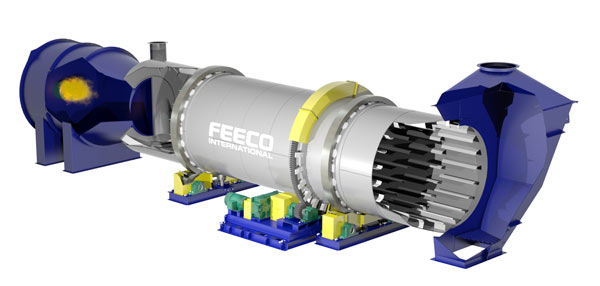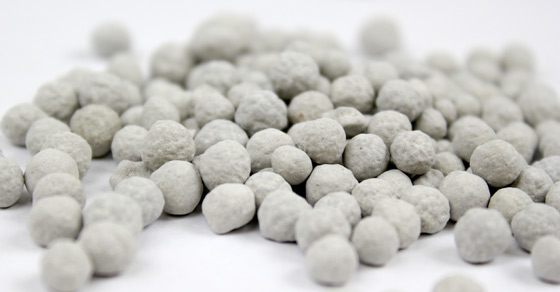Phosphorus is a vital component to the health of plants, assisting in many biological processes that help to create strong stems and roots, aid in resistance to disease, and create a more productive plant overall.
Phosphorus is derived from phosphate rock, deposits of which are mined all over the world. And while ground phosphate rock can be applied directly to soil, it is most beneficial to first process the phosphate rock into a form that allows the phosphorus to be more readily absorbed by plants.
Phosphate rock can be processed into a variety of phosphatic fertilizers. Most commonly, it is processed into Monoammonium Phosphate and Diammonium Phosphate fertilizers, also commonly known as MAP and DAP.
MAP & DAP Fertilizer Production
Once phosphate rock has been mined, the actual phosphate ore is beneficiated to separate it from the unwanted materials. This is carried out via a wet process, the resulting material of which must first be dried. This is typically carried out in a rotary dryer, an industrial drying system ideal for processing phosphate ore, because of its heavy-duty build and high capacity capabilities.

The dried phosphate ore is then most commonly processed into what are referred to as ammoniated phosphates. This is done by reacting the phosphate rock with sulfuric acid to produce phosphoric acid. The phosphoric acid is then reacted with ammonia to produce the ammoniated phosphate MAP or DAP.
MAP and DAP are produced utilizing the process illustrated and described below:

The phosphoric acid and ammonia are pre-neutralized (reacted) in tanks to form a slurry. This slurry is then fed into a rotary granulator, where it forms granules as it tumbles through the drum and solidifies.
These granules are then carried via conveyor or bucket elevator to a rotary dryer where they are dried into their final form. The tumbling action of the dryer further rounds and polishes the granules. Granules exit the dryer and go through a screening process to separate over- and under-size granules. Oversize granules are crushed via a chain mill and fed with the under-size granules back into the process as recycle. On-size product moves on to cooling, which is carried out using a rotary cooler. Cooling helps to prevent caking during storage and is necessary when material exiting the dryer is too hot for subsequent material handling or bagging equipment.
Additional Phosphatic Fertilizers
While phosphate rock is most commonly made into MAP and DAP, it can also be made into a variety of other fertilizer products as well:
- Single Super Phosphate (SSP)
- Triple Super Phosphate (TSP)
- NPK – While phosphate is not the base of this product, it is included with potassium and nitrogen to create a variety of NPK blends.
These materials may be comprised of varying components, but all are produced using the traditional granulation approach.
Conclusion
Phosphate is a key component in sustaining healthy and productive crops. While most phosphate rock goes to the production of MAP and DAP fertilizers, this life-giving mineral can be made into a variety of fertilizer products and blends through the process of granulation.
FEECO has been a leader in the fertilizer industry since 1951. We’ve helped companies around the globe to develop premium phosphatic fertilizer products with our custom, heavy-duty fertilizer production equipment and systems. For more information on processing phosphate rock for use in the fertilizer industry, contact us today!



